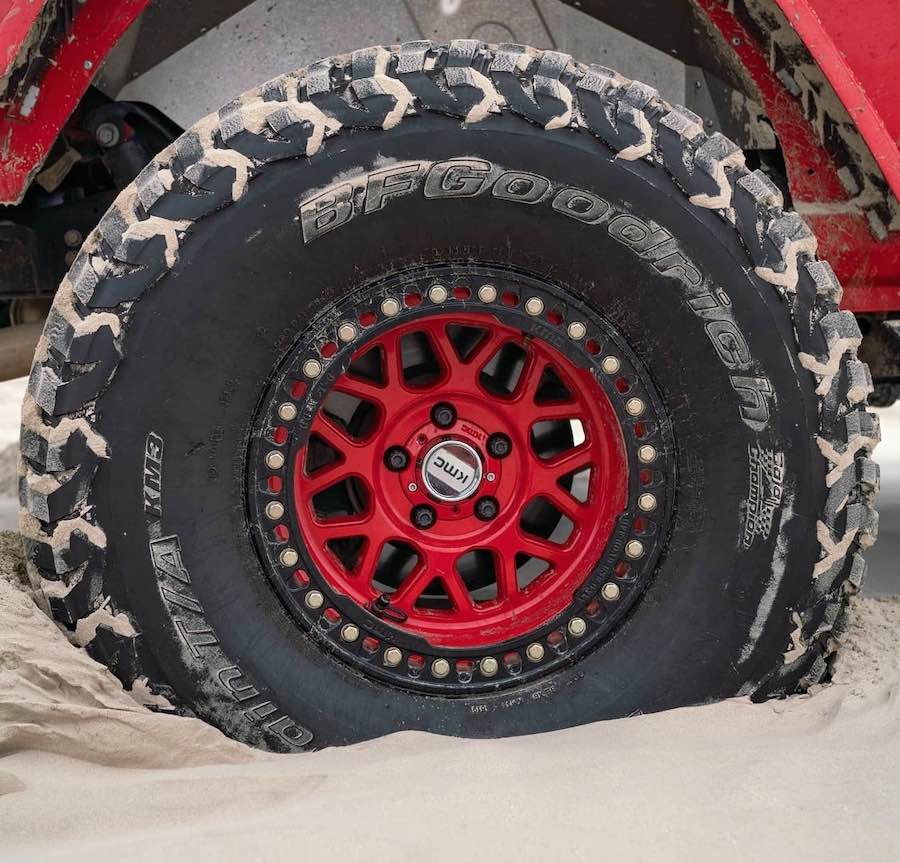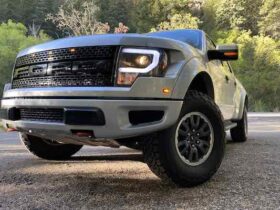There are many factors to consider when purchasing new tires for your vehicle. Two of the most popular choices are all-terrain and mud-terrain tires. But which is the best option for you? It depends on several factors, including where you live, what vehicle you drive, and how you use it. All-terrain tires are a good choice for those living in mild climates and mostly highway driving. If you’re driving more often in off-road conditions, mud terrain tires are a better option. They provide better traction and are more durable. Let’s get into more details about a mud terrain tire and an all-terrain tire.
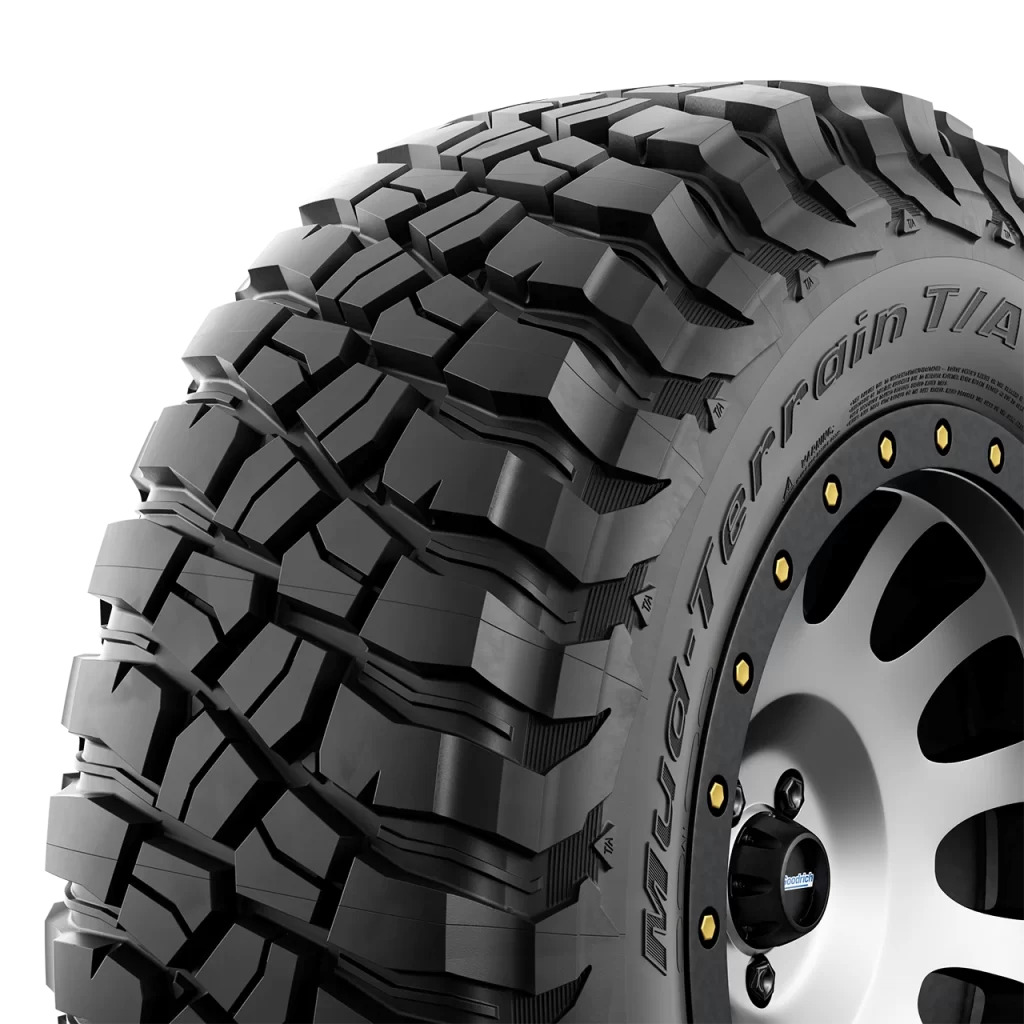
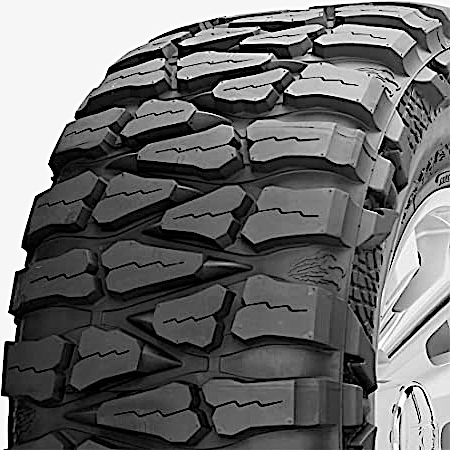
What Are Mud-Terrain Tires?
A mud-terrain tire, or an M/T, features aggressively oversized tread blocks that claw through mud terrains more easily. In addition to that, mud-terrain tires have reinforced sidewalls with rugged protruding designs. Because of this specialized construction, drivers can successfully travel along more challenging trails.
Aside from providing grip on steep trails, mud-terrain tires also provide driver safety. The tread configuration of mud-terrain tires is more aggressive than all-terrain tires. Wider lug spacing keeps adventure rigs running in a forward direction by clearing debris more efficiently.
Mud-terrain tires are designed to provide better traction and stability in off-road conditions. They typically have a deeper tread than other tires, and their tread pattern is designed to minimize the risk of getting stuck in mud or sand.
Mud-terrain tires can be an excellent option for drivers who frequently travel off-road or live in areas with poor road conditions. These aggressive tires can also be a good choice for drivers who want more peace of mind when driving on unpaved roads.
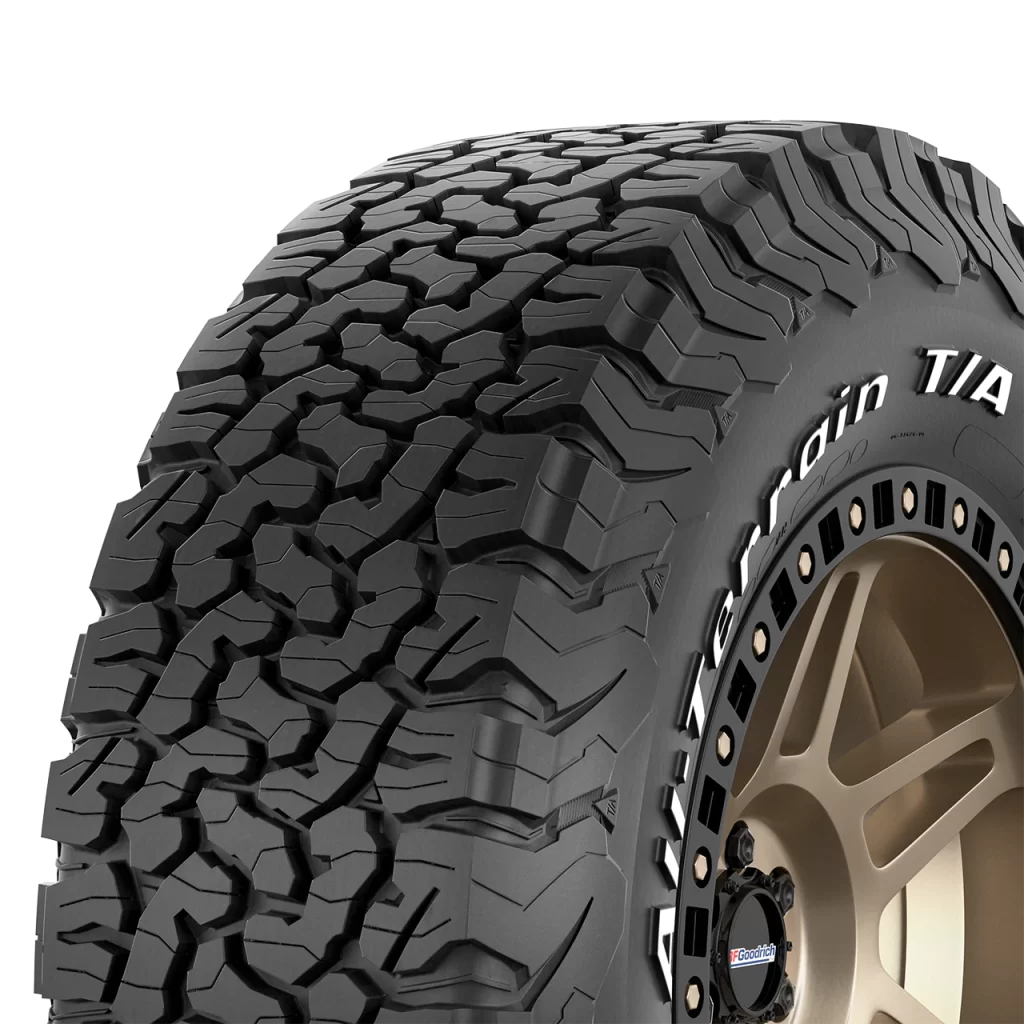
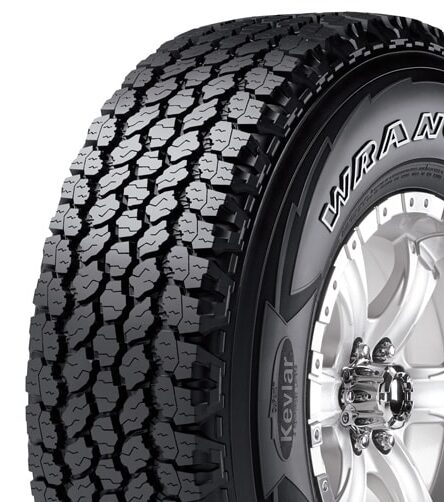
What Are All-Terrain Tires?
In contrast to their all-season highway tire counterparts, all-terrain tires have beefier tread patterns and thicker sidewalls. When exploring off-tarmac areas, A/Ts can handle off-road duties and traverse various terrains.
As well as displaying distinct or multi-pitch tread variations, they also make running on the road quieter. This is why an all-terrain tire is an excellent investment if you’re looking for one tire to serve both on and off-road purposes.
The right set of all-terrain tires can maximize any outfit and comfort of any SUV or light truck. Besides providing a unique look, durability, and dependability for your daily commute, you also get more space between lugs and open shoulders for superior driveability in any weather conditions. Plus, because the lugs in the huge tread blocks are variable, all-terrain tires are quieter on highways and city streets.
All Terrain vs. mud terrain tires
Mud Terrain Tires – Pros and Cons
The Pros
- Better offroad traction (softer compound)
- Built for soft surfaces such as mud & sand
- Designed with more space between treads to eject dirt out the sides of the tread.
**The only other tire that does better in the sand is a sand paddle… which is not a DOT-approved street legal tire
The Cons
- Generally more expensive
- Lower lifespan because of softer compound
- More road noise compared to AT
- Not all MT are DOT approved and street legal
- Many MT have a lower speed and load rating
- Often not low temperature climate rated.
All Terrain Tires
The Pros
- Great all-around off-road performance
- Lower cost than MT
- Longer tread life and larger load range
- Minimal added road noise
- It is often DOT-approved & street legal
- Higher speed and load ratings
The Cons
- Has lesser performance on some offroad surfaces
General Off-Road Performance
Both are built for offroad performance, but not all offroad is created equal. Mud terrain is just as the name says, great for MUD… but they also perform well in sand, silt, and loose dirt and the rock. The typical all-terrain is more suited as an all-around offroad tire with a better life on the road. In addition, all-terrain tires offer a more comfortable and smooth ride on the road, even in wet conditions.
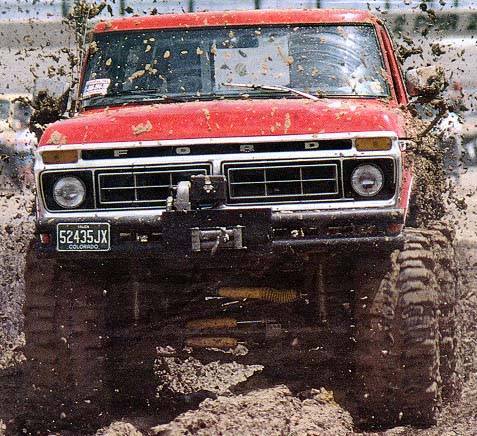
Mud
Mud Terrain Winner
Mud terrains origins started when agriculture tires placed on lifted truck with lots of horsepower to see who could climb through the deepest mud hole. They have evolved to DOT street legal options but still outperform AT everyday in the mud with the larges knobs to paddle through look muck and large spacing to evacuate the loose slurry from under the tires.
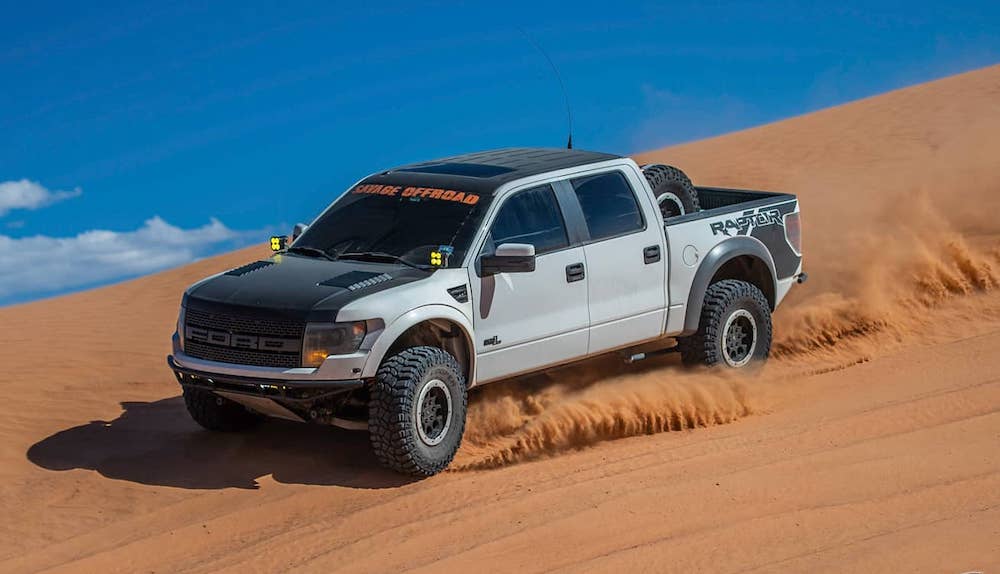
Sand –
Mudd Terrain Winner
The large knobs and big spacing between them on mud terrain tires outperform all terrains becuase of the their ability to bite into the loose surface and evacuate the sand propelling you forward. All terrains can still be a solid option if you only do occasional strips to the dunes but MT outperform. The only option better than MT are purpose built sand paddles.
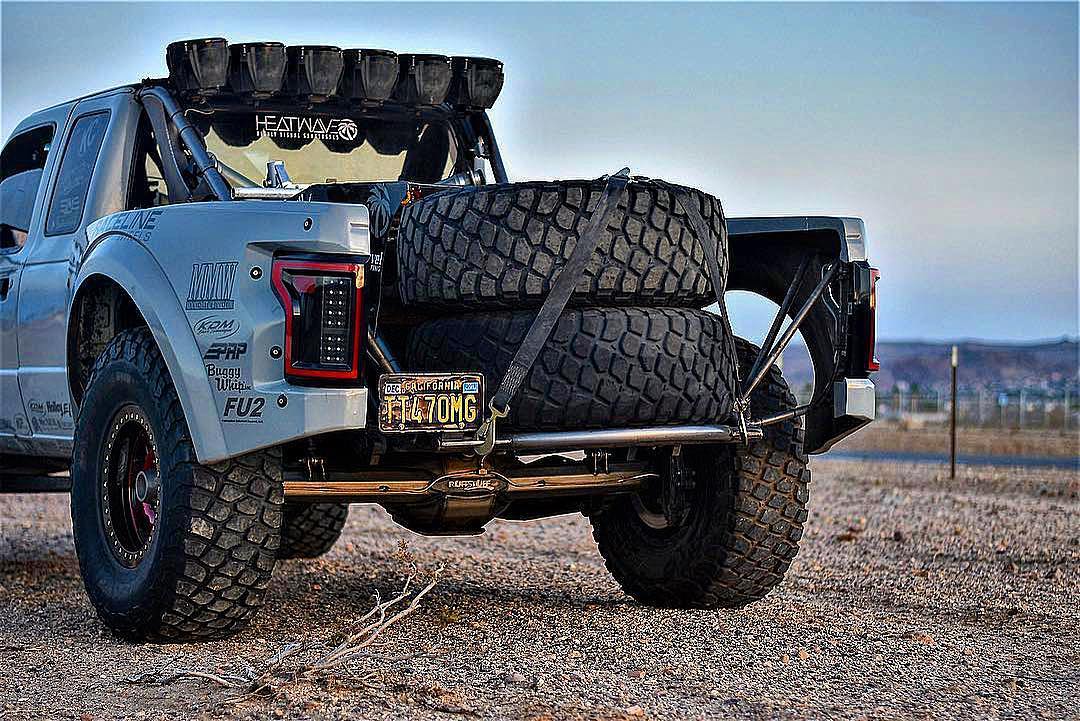
Desert Racing
Mud terrains have the advantage but both MT and AT are a good options
Desert racing is full of sand, rock and silt (all MT strengths) and can be seen as the winner but there is more too it. The BF Goodrich K02 all terrain has build a name in the desert truck world as a solid performing go to for a few reasons. Its affordable (cheaper than MT), you often don’t encounter heavy amounts of difficult terrain where the extra performance is crucial and SPEED… oh Speed. desert racing is about speed which the minimal different in the AT performance in sand, silt or rock is just fast stated “minimal. Finally the speed rating of AT tires Is generally higher, so if you run high speeds on the dry lakebed or take the highway to get where you need to ride, MT generally have lower ratings. Safety first, check your tires ratings.
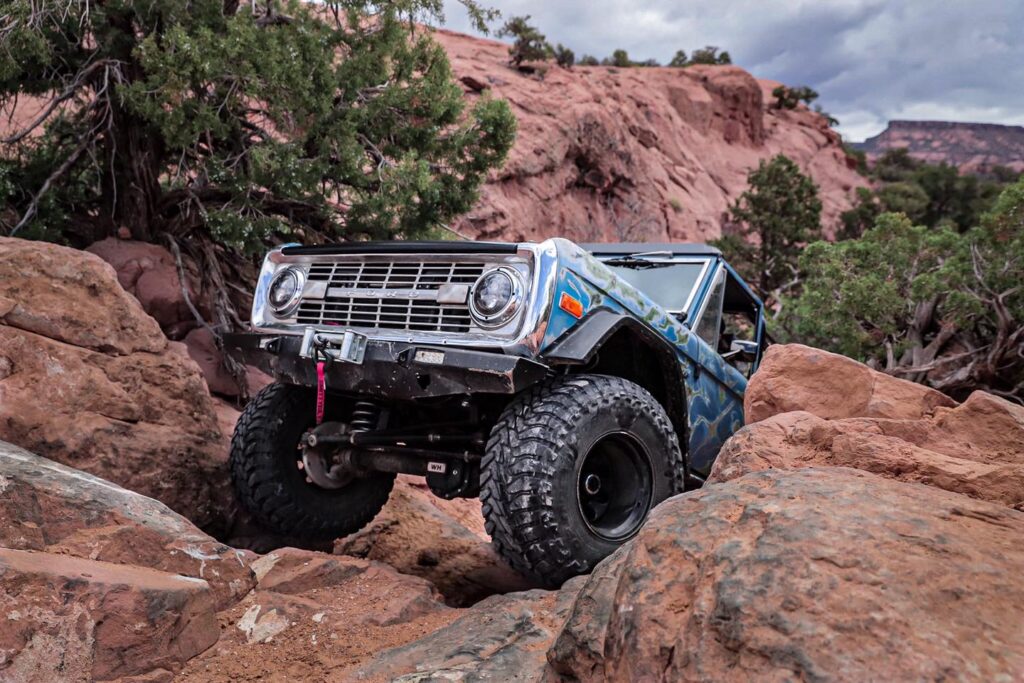
Rock Crawling
Its a TIE!
There is alot of debate on the better tire for rock crawling but its going to come down to what part of the country your in and the type or rock your in. All terrains provide more tire contact to the ground for hard rock where grip is important (Think Moab type crawling). Now if you have alot of other dirt and loose rock you might want mud terrains.
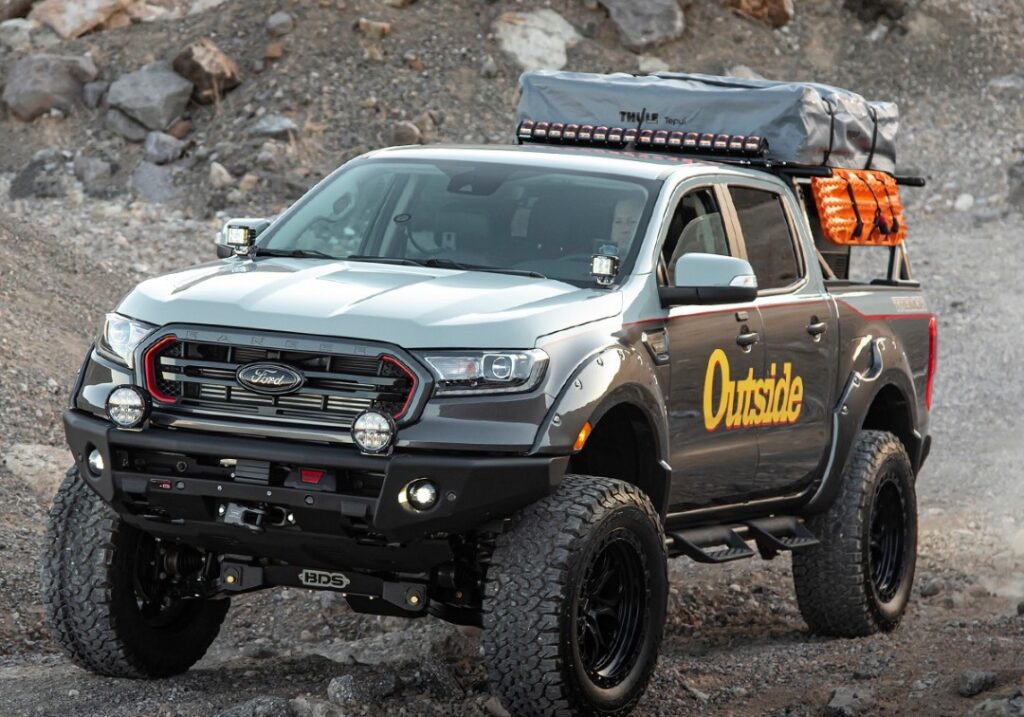
Overlanding
All Terrains Winner
Because over-landing is about long distances on and offroad, higher load ratings and diverse terrain, all terrains wins. Tread life is also another factor where the AT tire help push ahead of MT. MT are not a bad options but not as common of choice.

Snow
All Terrains Winner
All terrains win becuase mud terrains have a few downfalls. One, few if any mud terrains come with winter rating and are testing in these conditions. Two, their soft compound below 45 degrees becomes harder than all other all terrain tire and loses grip. Three, they have large lugs with no siping and once they fill the cracks with snow there is no surface left to grip. If you in the snow alot, all terrains should be your go to.
Do mud terrain tires wear faster than all-terrain?
Mud-tire is mainly made up of softer rubbers that offer better grip on most surfaces. But Is it true that mud tires wear quicker than all-terrain tires?
Mud terrain tires have a more aggressive tread pattern than all-terrain tires. This helps them grip better in mud, sand, and other off-road conditions. But the trade-off is that mud terrain tires wear out faster on paved roads.
If you do a lot of driving on unpaved roads, then mud terrain tires may be a good choice for you. But if you mostly drive on paved roads, then all-terrain tires will give you better mileage and longer tread life.
Are mud tires the same as all-terrain?
Mud tires and all-terrain tires may look similar, but they are actually quite different. All-terrain tires are used on various surfaces, including pavement, dirt, gravel, and mud. On the other hand, mud tires are specifically designed for use in mud and other off-road conditions. The tread pattern is one of the most significant differences between mud tires and all-terrain tires. Mud tires typically have a more aggressive tread pattern with larger lugs that provide better traction in mud and other off-road conditions. All-terrain tires usually have a less aggressive tread pattern that is more suited for paved surfaces.
Another difference between mud tires and all-terrain tires is the sidewall design. Mud tires typically have thicker sidewalls that can withstand more abuse from rocks and other debris on off-road trails.
Are all-terrain tires good for off-road?
All-terrain tires are not created equal. Some are better suited for off-road use than others. When choosing the right tires for your off-road vehicle, it is essential to consider the type of terrain you will be driving on. All-terrain tires are designed for use on various surfaces, including paved roads, gravel, and dirt. However, they are not all equally effective on each type of surface.
Mud terrain tires are specifically designed for driving on muddy or sandy surfaces. They have deeper treads than all-terrain tires, which helps them grip the ground and prevent the vehicle from getting stuck. Mud terrain tires also have a higher load rating than all-terrain tires, which means they can carry heavier loads without damage.
If you plan to do any serious off-roading, mud terrain tires are better than all-terrain tires.
Are mud tires good for highways?
Mud tires are designed to provide excellent traction in off-road conditions. They typically have deeper treads than other types of tires and may also have special features like reinforced sidewalls.
So, are mud tires good for highway driving? That depends on a few factors. If you frequently drive on unpaved roads or live in an area with a lot of rain or snow, mud tires can improve your traction and help you get around safely.
However, mud tires also tend to be noisier and less comfortable than other tires, so if you primarily stick to paved roads, you might want to go with all-terrain or street tires instead. Ultimately, the best type of tire for you will depend on your driving habits and the conditions in your area.
Final Words
In conclusion, all-terrain vs. mud terrain tires is a difficult question to answer. It depends on the specific needs of the driver and the vehicle. For those who do a lot of off-roading, mud terrain tires are the way to go. They provide better grip and traction in challenging conditions and work perfectly as off-road tires. However, all-terrain tires are a good choice for drivers who want a tire that performs well in all conditions, including on the highway. If you like our content on similar topics, leave a comment below and share it with your friends. Mention any topics you want us to discuss in future articles. For more automotive content on trucks and off-roading, check out our page, Beyond The Raptor.


